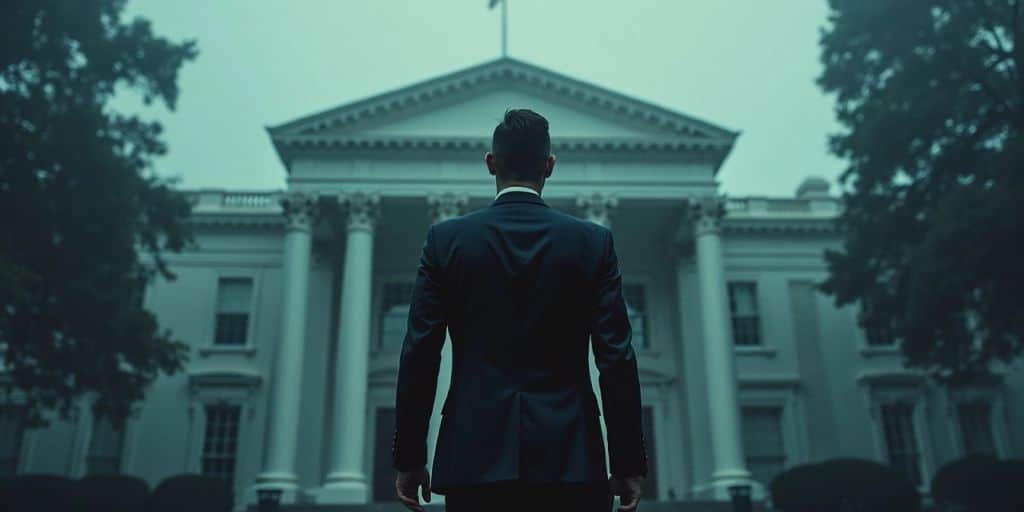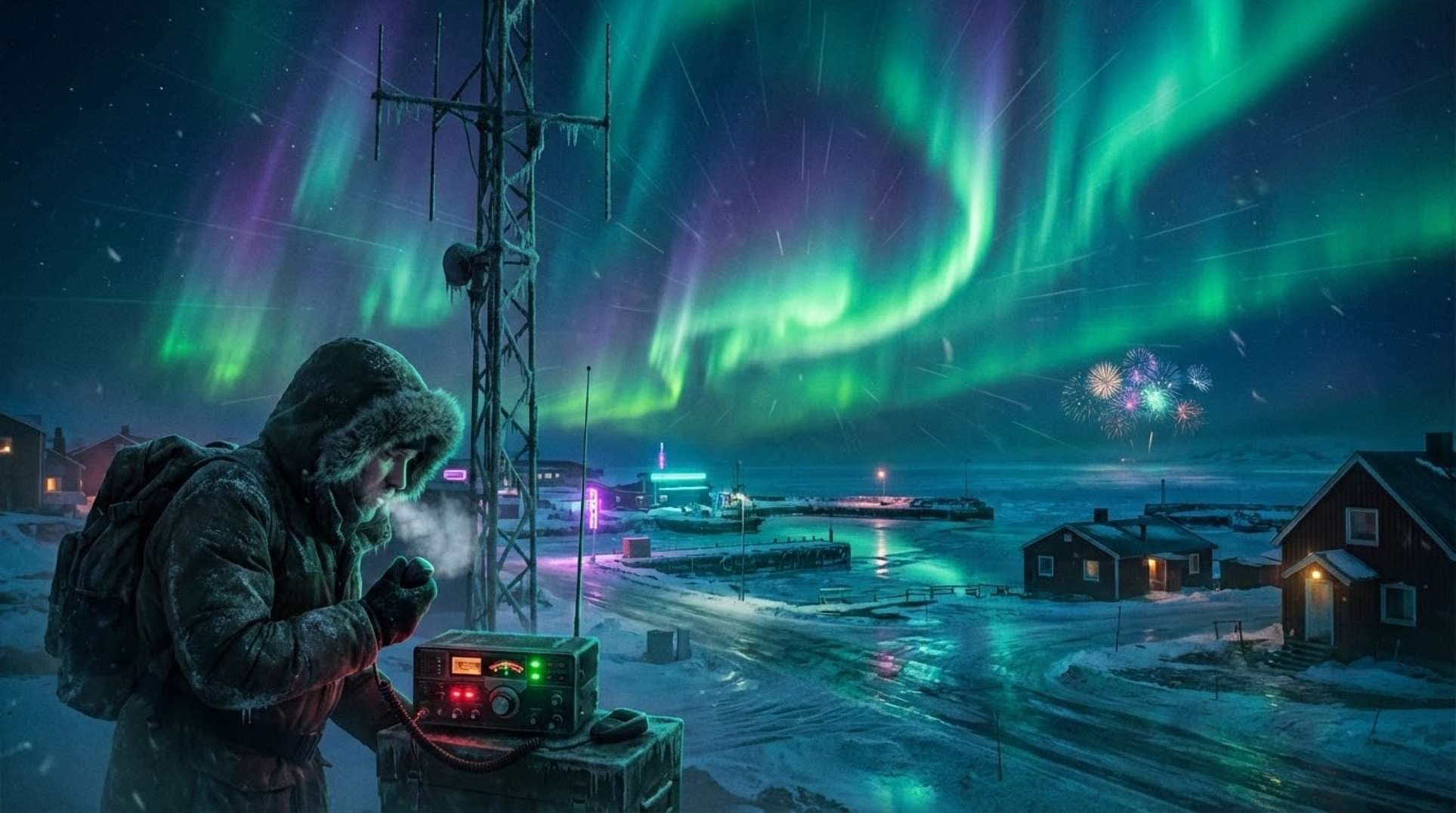In a world filled with secrets and hidden agendas, government projects often spark curiosity and speculation. This article delves into various secret government initiatives, exploring their origins, impacts, and the controversies that surround them. From covert operations to mysterious societies, we will uncover the layers of secrecy that have shaped history and continue to influence our understanding of the world today.
Key Takeaways
- Operation Paperclip brought former Nazi scientists to the U.S. after WWII.
- The Vril Society was linked to mystical beliefs and advanced technologies.
- Covert warfare has changed the course of history in significant ways.
- UFO sightings have led to numerous government cover-up theories.
- Black ops projects raise ethical questions about government secrecy.
Operation Paperclip: The Secret Recruitment of Nazi Scientists
After World War II, the U.S. government made a controversial decision to recruit over 1,500 German scientists, engineers, and technicians. This operation, known as Operation Paperclip, aimed to leverage their expertise for American advancements, especially in the fields of rocketry and military technology.
The Origins and Objectives of Operation Paperclip
The origins of Operation Paperclip can be traced back to the end of World War II in 1945. The U.S. was eager to prevent these skilled individuals from falling into Soviet hands. The main objectives included:
- Advancing U.S. military technology
- Gaining knowledge in aerospace engineering
- Countering Soviet influence in science and technology
Key Figures and Their Contributions
Among the notable figures recruited were:
- Wernher von Braun: A leading rocket engineer who played a crucial role in developing the U.S. space program.
- Walter Schreiber: A medical scientist involved in unethical human experiments during the war.
These individuals contributed significantly to projects like the Apollo moon landing and the development of missile technology.
Controversies and Ethical Implications
The recruitment of these scientists raised serious ethical questions. Many were linked to war crimes, and the U.S. government created false records to grant them security clearances. This led to public outcry and debates about morality in the pursuit of national security.
The decision to hire former Nazis highlights the complex moral dilemmas faced by governments in times of crisis.
In summary, Operation Paperclip remains a controversial chapter in U.S. history, illustrating the lengths to which the government would go to secure technological superiority, even at the cost of ethical integrity.
The Vril Society: Mystical Beliefs and Advanced Technologies

Origins and Beliefs of the Vril Society
The Vril Society was a secret group that emerged in Germany during the early 20th century. They believed in a mystical energy called Vril, which they thought could be harnessed for various purposes, including advanced technology and healing. This society was often linked to occultism in Nazism, as many of its members were fascinated by ancient myths and spiritual practices.
Alleged Connections to Nazi Germany
Some theories suggest that the Vril Society had connections to the Nazi regime. They allegedly influenced certain Nazi leaders, who were interested in their ideas about technology and power. This connection has fueled speculation about how these beliefs may have shaped some of the Nazi’s technological advancements during World War II.
Impact on Modern Conspiracy Theories
The Vril Society has become a popular topic in modern conspiracy theories. Many believe that their ideas about energy and technology have influenced various secret projects and even UFO sightings. Here are some key points about their impact:
- Mystical energy theories continue to attract attention.
- The idea of secret societies influencing governments remains popular.
- Many conspiracy theories link the Vril Society to hidden technologies.
The Vril Society represents a fascinating intersection of mysticism and technology, showing how beliefs can shape historical narratives and modern conspiracies.
Covert Warfare: Shaping History from the Shadows

Covert warfare has been a crucial part of global conflicts, often influencing events without public knowledge. These secret operations can change the course of history.
Historical Examples of Covert Warfare
- Operation Northwoods: A plan to stage fake terrorist attacks to justify military action against Cuba.
- Project Azorian: An attempt to recover a sunken Soviet submarine, showcasing the lengths to which the CIA would go for intelligence.
- Operation Gold: The first covert CIA operation of the Cold War aimed at tapping Soviet communications in Berlin.
Techniques and Strategies Used
- Espionage: Stealing state secrets to gain an advantage.
- Propaganda: Manipulating public opinion to support government actions.
- Economic Sanctions: Using financial pressure to influence other nations.
| Operation Name | Year | Objective |
|---|---|---|
| Operation Northwoods | 1962 | Justify military intervention in Cuba |
| Project Azorian | 1970-1974 | Recover a sunken Soviet submarine |
| Operation Gold | 1954 | Intercept Soviet communications |
Impact on Modern Conflicts
Covert operations have shaped modern conflicts by creating distrust and altering political landscapes. They often lead to conspiracy theories that fuel public skepticism about government actions.
In the shadows of power, covert warfare reveals the hidden battles that shape our world. Understanding these operations is key to grasping the complexities of international relations.
By examining these covert actions, we can better understand the unseen forces that influence global events and the unexplained network of power behind them.
Government Cover-Ups: The Truth About UFOs
Historical UFO Sightings and Government Responses
The topic of UFOs has intrigued people for decades. Many believe that the government is hiding information about these mysterious sightings. Some of the most famous incidents include:
- Roswell Incident (1947): A rancher found debris, leading to claims of a military cover-up.
- Phoenix Lights (1997): Thousands witnessed lights in a V-shape; the military claimed they were flares, but many disagreed.
- USS Nimitz Encounter (2004): Navy pilots encountered a fast-moving object, captured on video, raising national security concerns.
Declassified Documents and Leaks
In recent years, declassified documents have revealed that the U.S. government has been studying unidentified aerial phenomena (UAP) for years. This has led to speculation about what they might know. Here’s a brief overview of some key findings:
| Year | Event | Description |
|---|---|---|
| 1947 | Roswell | Debris found, military involvement suspected |
| 1997 | Phoenix Lights | Mass sighting, military explanation questioned |
| 2004 | Nimitz Encounter | Navy pilots report fast-moving object |
Public Perception and Media Representation
The ongoing dialogue about UFOs has changed how the public views these phenomena. Many people are now more open to the idea that we might not be alone in the universe. This shift in perception is crucial as it encourages more people to explore the mysteries of the cosmos.
The fascination with UFOs is not just about the sightings; it’s about what they represent in our quest for knowledge about the universe.
In conclusion, the debate over UFOs is far from over. Whether you’re a believer or a skeptic, the search for answers continues. The government’s top secret investigations into UFO sightings suggest that there may be more to the story than we know.
Black Ops Projects: Unveiling the Hidden Missions
Black Ops projects are secret missions often conducted by government agencies like the CIA. These operations are usually hidden from the public and involve risky tasks to gather intelligence, influence global politics, or eliminate threats. These covert missions can change the course of history.
Famous Black Ops Projects
- Operation Gold: This was an attempt to tap into Soviet communications during the Cold War. A tunnel was dug under Berlin, but it was discovered by the Soviets before it could be fully utilized.
- Operation Merlin: The CIA tried to mislead Iran’s nuclear program by providing them with fake nuclear blueprints. Unfortunately, the plan backfired when the Iranians realized the blueprints were flawed.
- Project Azorian: This ambitious project aimed to recover a sunken Soviet submarine. Although it was complicated and ultimately unsuccessful, it showcased the lengths to which the CIA would go for intelligence.
Ethical and Legal Concerns
- Lack of Transparency: Many of these operations are conducted without public knowledge, raising questions about accountability.
- Human Rights Violations: Some missions have led to significant ethical dilemmas, including the potential for harm to innocent people.
- International Law: Many black ops projects operate in a gray area of legality, often violating international laws.
Impact on International Relations
Black Ops projects can have lasting effects on global politics. They can:
- Destabilize Regions: Covert actions can lead to unrest and conflict in targeted countries.
- Influence Public Opinion: Propaganda and misinformation can sway public perception in favor of or against certain governments.
- Create Distrust: When these operations are revealed, they can lead to a breakdown of trust between nations.
The world of black ops is a complex web of secrecy and intrigue, where the stakes are high and the consequences can be far-reaching. Understanding these hidden missions is crucial to grasping the full picture of global politics.
| Project Name | Year | Outcome |
|---|---|---|
| Operation Gold | 1954 | Partially successful |
| Operation Merlin | Late 1990s | Backfired |
| Project Azorian | 1960s | Unsuccessful |
The Role of Secret Societies in Government Projects
Historical Influence of Secret Societies
Secret societies have been part of history for centuries, often influencing political events from behind the scenes. These groups operate in secrecy, making it hard to know their true impact. Some notable examples include:
- The Freemasons: Known for their networking and influence in politics.
- The Illuminati: Often linked to conspiracy theories about world control.
- The Knights Templar: Played a significant role in the Crusades and European politics.
Modern-Day Secret Societies and Their Alleged Power
In today’s world, secret societies still exist and are believed to have significant influence. They often operate through:
- Networking: Members help each other in business and politics.
- Influence: They may sway decisions in government and corporations.
- Secrecy: Their hidden nature makes it difficult to track their actions.
Debunking Myths and Separating Fact from Fiction
While many believe that secret societies control everything, the truth is often less dramatic. Here are some common myths:
- Myth: They control world events.
- Fact: They may influence, but not control.
- Myth: All members are powerful elites.
- Fact: Membership varies widely.
Understanding the role of secret societies requires a careful look at both history and modern events. They are often more about networking and influence than outright control.
Psychic Espionage: The Stargate Project and Beyond
Origins and Objectives of the Stargate Project
The Stargate Project began in the 1970s as a secret CIA program aimed at exploring psychic abilities, particularly remote viewing. This technique was thought to allow individuals to perceive distant locations or events using only their minds. The project was initiated during the Cold War, as the U.S. government wanted to investigate whether psychic phenomena could be used for intelligence purposes.
Techniques and Success Rates
The Stargate Project employed various methods to train participants in remote viewing. Some of the key techniques included:
- Meditation to enhance focus and clarity.
- Visualization exercises to help participants picture the target locations.
- Feedback sessions to improve accuracy based on previous attempts.
Despite these efforts, the project faced skepticism. Many concluded that the results were not reliable enough to justify continued funding. The project was officially terminated in 1995 after nearly two decades of research.
Public and Scientific Reactions
The public reaction to the Stargate Project has been mixed. Some view it as a fascinating exploration of the mind, while others see it as a waste of taxpayer money. Scientific communities have largely dismissed remote viewing as unproven, often citing a lack of rigorous evidence. However, the project has inspired numerous conspiracy theories and discussions about government cover-ups related to psychic research.
The Stargate Project remains a captivating example of how far governments will go to explore the unknown, blending science with the supernatural.
Explore the fascinating world of psychic espionage, including the secrets of the Stargate Project and what lies beyond. If you’re curious about uncovering hidden truths and gaining deeper insights, visit our website for exclusive content and resources. Don’t miss out on the chance to expand your knowledge!
Conclusion
In conclusion, the world of secret government projects is filled with mystery and intrigue. From hidden technologies to covert operations, these projects often remain in the shadows, leaving us to wonder what is truly happening behind closed doors. While many theories exist, the truth can be hard to pin down. The stories of groups like the Vril Society and events like Operation Highjump remind us that the quest for knowledge and understanding is ongoing. As we continue to explore these hidden realms, we must remain curious yet cautious, always seeking the truth while questioning the narratives presented to us.
Frequently Asked Questions
What was Operation Paperclip?
Operation Paperclip was a secret U.S. program after World War II that brought German scientists to America to help with technology and military projects.
Who were the key people involved in Operation Paperclip?
Some important figures included Wernher von Braun, a rocket scientist, who played a big role in developing the U.S. space program.
What is the Vril Society?
The Vril Society was a group that believed in advanced technologies and ancient civilizations, often linked to conspiracy theories about Nazi Germany.
How has covert warfare affected history?
Covert warfare has shaped many historical events by influencing wars and political situations without the public knowing.
What are government cover-ups regarding UFOs?
Government cover-ups about UFOs involve secret investigations and reports that have been hidden from the public, leading to many conspiracy theories.
What are Black Ops projects?
Black Ops projects are secret missions conducted by government agencies that often involve risky operations to gather intelligence or carry out specific goals.




